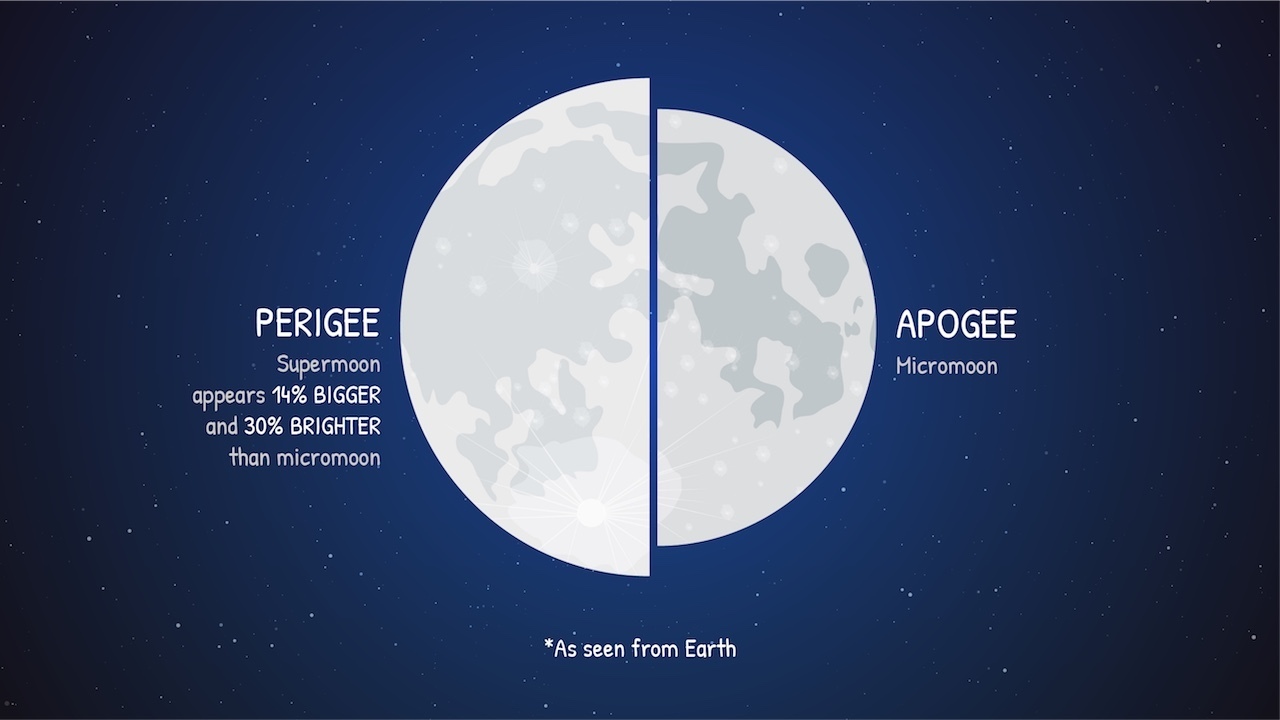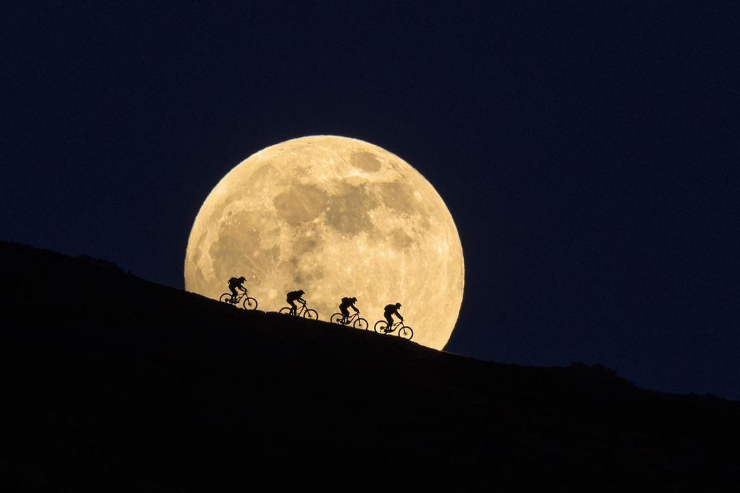A Moon That Glowed for All
On the night of October 6–7, 2025, the sky lit up with one of the most dazzling lunar displays of the decade. Earth’s natural satellite—our Moon—edged closer than usual, swelling in brightness and size, and aligning in celestial dances with Saturn and the Pleiades. This was no ordinary full moon: it was a Harvest Supermoon, the first of three consecutive supermoons that would close out the year.
Across continents—from the Andean highlands to the plains of Kenya, from rooftops in Europe to quiet deserts in Australia—the world turned its eyes skyward. For some, it was science; for others, sacred ceremony. But for all, it was a rare moment of shared wonder.
The Science of Supermoons: What Makes This One Special
What Exactly Is a Supermoon?
In astronomy, a supermoon (technically a “perigee full moon” or “perigee syzygy”) occurs when the Moon is at its closest approach to Earth (perigee) while also being full. That combination makes it appear slightly larger and significantly brighter than a typical full moon. Wikipédia+1
In 2025, October’s full moon (October 7, 03:48 UTC) qualifies as a supermoon. NASA’s calendar confirms it joins November 5 and December 4 as three consecutive supermoons for the year.

October’s Harvest Moon in a New Light
Traditionally, the Harvest Moon is the full moon closest to the autumnal equinox—a title almost always belonging to September. But in 2025, that alignment shifted: October’s full moon earned the “Harvest” name, making it the first October Harvest Moon in five years. Accelerator+3Star Walk+3Space+3
When the Moon reaches perigee, it can appear up to 14% larger in diameter and 30% brighter in luminosity than a standard full moon. AP News+4Accelerator+4NASA Science+4
Celestial Alignments: Saturn & the Pleiades
What made this supermoon even more celestial was its neighbor in the night sky: Saturn, passing just 3° 20′ away, creating a striking visual conjunction. Accelerator+4Adler Planetarium+4skyatnightmagazine.com+4
In the following nights (October 9–10), the Pleiades star cluster (also known as the Seven Sisters) drifted close to the waning gibbous Moon, forming one of the rare “Moon-Pleiades conjunctions” that had skywatchers and astrophotographers buzzing. Space+3skyatnightmagazine.com+3Star Walk+3
This was no mere spectacle—it was a celestial symphony.
Cultural Reverence Under Lunar Glow
Kenya’s Maasai: Moonlight, Ritual, and Rain
In Kenya’s Maasai communities, the supermoon triggered age-old ceremonies tied to grazing, rain, and ancestral blessings. Elders led moonlit dances and chants, invoking celestial favor for land and livestock under the luminous glow. To them, the moon is more than a satellite—it’s a messenger.

The Andes: Trek to the Moonrise
In Peru, indigenous and tourist groups alike ascended peaks to greet what they called “Mama Quilla’s gift”—the Moon goddess gracing the skies with grandeur. Tour operators reported surges in bookings for “moonrise over ruins” experiences, complete with drone time-lapses capturing the lunar ascent.
Asia’s Mooncake Nights & Lunar Lore
In China, this supermoon extended the mood of the Mid-Autumn Festival. Rooftops and parks filled with families sharing mooncakes and poems. Enthusiasts claimed the moon’s radiance was so strong they could read classical texts outdoors without artificial light.
In Indigenous cultures worldwide—Native Americans, Australian Aboriginal groups, and others—traditional stories tied to the moon’s cycles found new audiences as celestial watchers and astronomers alike shared their knowledge.

Science in Motion: Research, Data, and Discovery
Global Observatory Efforts
NASA, ESA, and observatories from Chile to Hawaii deployed telescopes and instruments to capture enhanced lunar detail during the supermoon event. Illuminated crater shadows, subtle temperature changes, and atmospheric effects were under scrutiny.
Citizen Science Takes the Stage
The International Astronomical Union’s Global Moon Watch program exploded in popularity, collecting over 50,000 lunar photos from 89 countries—from smartphones to advanced telescopes. These images are helping build one of the most comprehensive lunar databases ever.
Moonlight and Marine Life
Marine biologists used this period of amplified lunar gravity to observe tidal anomalies and marine behaviors. Some coral reefs showed heightened spawning, and nocturnal species adjusted patterns under the brighter moonlight—a rare, natural experiment in action.
Astrotourism, Digital Detox, and New Moon Magic
The Rise of Astro-Travel
Travel companies reported 300% more bookings for dark-sky destinations. Places such as Mongolia’s steppes, remote Australian outback sites, and ranches in the American West adopted “moonrise retreats” offering immersive lunar experiences.
Unplugging Under Moonlight
Digital-detox camps, where participants surrendered screens to fully experience the night, saw unprecedented enrollment. Organizers noted that October’s supermoon was bright enough to eliminate the need for artificial lighting—providing pure, illuminated immersion.

Photography: From Penumbra to Panorama
Photographers leveraged the brightness to shoot handheld lunar portraits, twilight panoramas, and moonlit landscapes. The shot of the supermoon perched above the Gateway Arch in St. Louis went viral—a perfect example of aligning trajectory timing, elevation, and exposure.
Social media quickly reflected the mood. More than 2.3 million posts surfaced under #Supermoon2025, and time-lapse videos racked up hundreds of millions of views across platforms.
What’s Next: A Run of Supermoons & Meteor Delights
The October event was just the beginning. The upcoming supermoons on November 5 (Beaver Moon) and December 4 (Cold Moon) promise even more cosmic drama.
On the meteor front, the Orionid meteor shower, peaking around October 21, will benefit from darker skies—making it one of the best meteor-viewing periods of the year.
Final Thoughts: Moonlight That Brought Us Together
In an era of light pollution, screens, and constant distraction, the Supermoon 2025 reminded humanity of our shared sky. Scientists studied, poets mused, communities celebrated, and ordinary people paused in wonder.
No telescope was required—only clear eyes, open hearts, and a sky wide enough to fit all of us under its glow.
—————————————————————
Thanks for joining this wild ride. Stay curious, stay tuned, and let’s make our world brighter!
Subscribe to our channel and stay tuned for more intriguing mysteries and scientific wonders. Together, let’s uncover the secrets of the Earth and expand our understanding of this fascinating world.
Check out the latest blog and video on YouTube and learn something new today.
Attention, all readers! To deepen your understanding and stay informed on the latest news and trends, be sure to click on the link to access more informative articles.
Join the family by liking us on Facebook, or follow us on Twitter and Instagram.
If you liked this story, sign up for the weekly OneMinuteExplore features newsletter called “The Essential List”. A handpicked selection of stories from OneMinute Nature, Wildlife, Culture, Travel, Stories, and more… delivered to your inbox every Weekend.
👉 We may earn a commission from purchases made through links in this content, but it won’t affect your price. Rest assured, our recommendations are based on thorough research and genuine belief in the products. Your support through these links helps us continue providing valuable content. Thank you for being so supportive!













